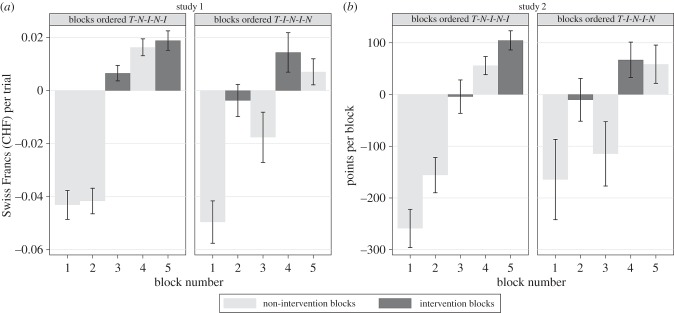Figure 3.
Choice performance by block. (a) Choice surplus earned by n = 49 subjects in each of the five blocks. (b) Points earned by n = 40 subjects in each of the five blocks. All subjects began with a non-intervention block (first block T). In the second block, subjects either experienced another non-intervention (N) block (left half-panels) or an intervention (I) block (right half-panels). After that, the blocks alternated between I and N. To better reflect the within-subjects nature of the design, the data were individually de-meaned by subtracting, for each subject, the mean of blocks 2–5. Thus a positive bar means that in this block, on average, participants did better than the average from blocks 2–5, and vice versa for negative bars. Performance in I is always higher than in the previous N trials. The higher performance in I trials also holds when we control for experience.

